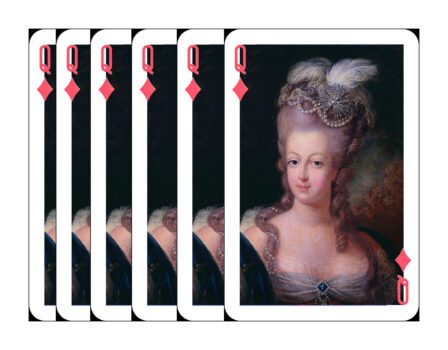The Fall of a Queen Through Falsehoods, Scandal, and Transformation
This article explores whether Marie Antoinette was truly guilty of the corruption and treason she was accused of, the origins of the false narratives surrounding her, and how history has reassessed her legacy. Was she an opulent villain blind to the sufferings of her people, or was she the ultimate scapegoat for a crumbling regime?
In the tumultuous twilight of France’s ancien régime, one name remains emblazoned across history: Marie Antoinette. The last Queen of France before the French Revolution, she has been remembered variously as a lavish spender, a political scapegoat, a misunderstood foreigner, and a tragic figure consumed by the tidal wave of revolution. Her life, and more pointedly, the accusations that swirled around her, offer a window into the complex machinery of public perception, propaganda, and the fragility of royal power in a time of massive societal upheaval.
The Early Life of a Queen-to-Be
Born in 1755 in Vienna, Austria, Marie Antoinette was the fifteenth child of Empress Maria Theresa and Holy Roman Emperor Francis I. At the age of 14, she was married off to the Dauphin of France, Louis-Auguste, in a political alliance meant to strengthen ties between Austria and France. When Louis became Louis XVI in 1774, Marie Antoinette became the Queen of France at just 19 years old.
From the outset, her position was fraught. The French people viewed her with suspicion, partly because she was Austrian, a traditional enemy of France, and partly due to the deepening economic and political crises that were already undermining the French monarchy. Over time, she would become a lightning rod for resentment, her foreignness and femininity weaponized in the public imagination.
Was Marie Antoinette Accused of Corruption?
Absolutely, repeatedly and virulently. Marie Antoinette was portrayed in the popular press as the embodiment of corruption, greed, and vice. These portrayals were fueled by a range of factors: xenophobia, misogyny, political instability, and the Enlightenment’s growing critique of monarchy.
But was she actually corrupt in any legal or political sense? Historically, there is little concrete evidence to suggest that Marie Antoinette engaged in political corruption, at least not in the way her critics claimed. She was not a political schemer in the same league as a cardinal or minister. In fact, many contemporary accounts describe her as politically naïve, disinterested in governance, and more concerned with her private life and court entertainments.
However, her perceived influence over the king and lavish lifestyle made her a convenient symbol of everything that was wrong with the French monarchy. She was accused of manipulating royal decisions, giving favors to her favorites, and enriching herself and her allies at the expense of the nation.
The Diamond Necklace Affair: Marie Antoinette’s Most Famous False Accusation
Perhaps the most damaging false accusation leveled against Marie Antoinette was the infamous Diamond Necklace Affair of 1785. This elaborate scandal involved a diamond necklace worth 1.6 million livres, a staggering amount at the time, and a web of forgeries, impersonations, and deceit.
The affair began when Cardinal de Rohan, a high-ranking clergyman desperate to regain the queen’s favor, was duped by a con artist named Jeanne de la Motte. Jeanne convinced Rohan that he was corresponding with the queen through secret letters. She even arranged a midnight meeting in the gardens of Versailles with a prostitute dressed as Marie Antoinette.
Believing he was acting on the queen’s orders, Rohan negotiated the purchase of the extravagant necklace on her behalf. When the con unraveled, the public believed Marie Antoinette had orchestrated the whole thing. Despite clear evidence that she had no involvement, her reputation was irreparably damaged.
The affair painted her as a manipulative spendthrift and confirmed in the minds of many that she was willing to bankrupt the country for personal luxury. Although she was entirely innocent, the perception of her as corrupt became entrenched.
Who Accused Marie Antoinette of Treason?
During the French Revolution, Marie Antoinette was formally accused of treason by the Revolutionary Tribunal, a court established to try enemies of the revolution. By 1793, the monarchy had been abolished, the king had been executed, and the Reign of Terror was in full swing.
Her trial was a farce, filled with politically motivated charges and fabricated evidence. She was accused of conspiring with foreign powers, particularly Austria, to suppress the revolution. While it’s true that she exchanged letters with her Austrian family and sought support to protect the monarchy, these actions were not exceptional for a monarch under siege.
She was also accused of depleting the national treasury and even, shockingly, of incest with her young son, a charge that disgusted even her political enemies. These allegations were clearly designed to dehumanize her and justify her execution.
Ultimately, Marie Antoinette was convicted of high treason and guillotined on October 16, 1793, at the age of 37.
What Kind of Person Was Marie Antoinette?
Marie Antoinette has often been reduced to caricatures: the frivolous spendthrift, the foreign queen, the traitorous royal. But who was she, really?
By most historical accounts, she was a complex and evolving figure. Early in her reign, she was admittedly immature and self-indulgent. She loved fashion, theater, and gambling, and spent large sums of money on clothes, jewels, and parties, earning her the nickname “Madame Déficit.”
However, she was also a loyal wife, a devoted mother, and someone who eventually recognized the gravity of the political situation around her. In her later years, especially during the revolution, she displayed remarkable composure, courage, and a sense of duty. She wrote passionately to her allies and family members, attempting to save her children and uphold the monarchy.
Her personal life was far from scandalous. The supposed affairs, such as with Count Axel von Fersen, remain unproven and speculative. Many historians argue that she was more a victim of circumstances than a perpetrator of political wrongdoing.
Did Marie Antoinette Say “Let Them Eat Cake”?
The phrase “Let them eat cake” (in French, Qu’ils mangent de la brioche) is perhaps the most famous quote attributed to Marie Antoinette, supposedly uttered when told the peasants had no bread.
But there is no historical evidence she ever said it.
The phrase actually predates her. It first appears in the writings of philosopher Jean-Jacques Rousseau, published when Marie Antoinette was just nine years old and still living in Austria. The quote likely originated as a general satire of aristocratic ignorance, and was later wrongly attributed to her to enhance the revolutionary narrative.
Nevertheless, the quote stuck. It encapsulated the public’s perception of a callous queen indifferent to the suffering of her people, regardless of its inaccuracy.
How Much Money Did Marie Antoinette Spend?
Marie Antoinette did indeed spend lavishly, particularly in the early years of her queenship. She had a penchant for fashion, often ordering extravagant dresses, wigs, and accessories. Her wardrobe expenses were infamous at court and in the press.
She also spent enormous sums on entertainment and private retreats, most notably Le Petit Trianon, a small chateau within the Versailles grounds where she hosted private parties and tried to escape court life. The construction of a mock peasant village there, the Hameau de la Reine, further fueled perceptions of her as out-of-touch.
Estimates suggest she spent millions of livres during her lifetime. However, her spending was a small fraction of the national budget, which was already crippled by decades of war, inefficient taxation, and poor financial management by the government. The real sources of France’s fiscal crisis lay in structural economic problems and the debt from supporting the American Revolution, not Marie Antoinette’s wardrobe.
Still, perception is powerful. Her extravagance became symbolic of royal excess, even if it was not the root cause of the nation’s woes.
Was Marie Antoinette Innocent or Guilty? What Do People Believe Today?
Marie Antoinette’s guilt or innocence is still debated in public discourse, though most modern historians agree that she was largely innocent of the major accusations against her.
She did not orchestrate the Diamond Necklace Affair.
She did not say “Let them eat cake.”
She did not commit incest.
Her political efforts were typical of a queen trying to preserve the monarchy.
While she spent lavishly, she did not single-handedly bankrupt France.
The radical propaganda of the time successfully turned her into a villain, but this image has softened significantly over the centuries. In many ways, she has become a tragic figure, a queen caught in the wrong place at the wrong time, struggling against forces beyond her control.
There is now a broader understanding that Marie Antoinette was scapegoated for the failures of the monarchy and used as a tool by revolutionaries to stir public anger. Her downfall was not about personal corruption, but about symbolic power. She became the embodiment of everything that the revolution sought to destroy.
Conclusion: A Legacy Rewritten
Marie Antoinette remains one of history’s most iconic and misunderstood figures. Once vilified as a heartless queen oblivious to her people’s suffering, she has increasingly been recognized as a human being: flawed, privileged, but ultimately a victim of political forces far beyond her control.
Her story is not just about diamonds, decadence, and the guillotine. It is about the dangerous power of misinformation, the consequences of public perception, and the fragility of those at the top when the world beneath them begins to shift. In many ways, Marie Antoinette did not fall from grace because of her actions, but because of what she came to symbolize.
As history continues to reassess her life, one thing becomes clear: Marie Antoinette was far less the monster of revolutionary pamphlets, and far more a tragic casualty of a collapsing world order.




